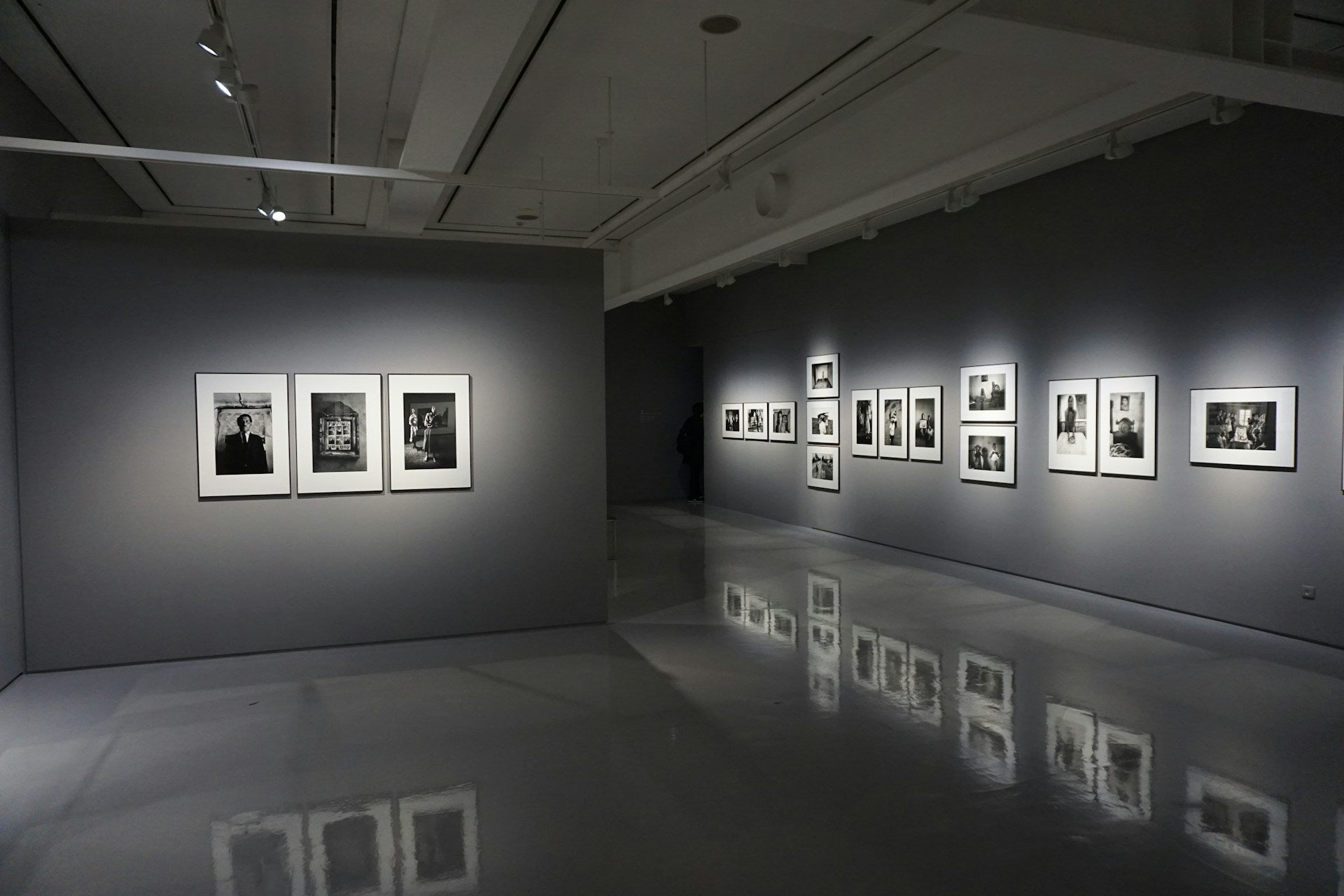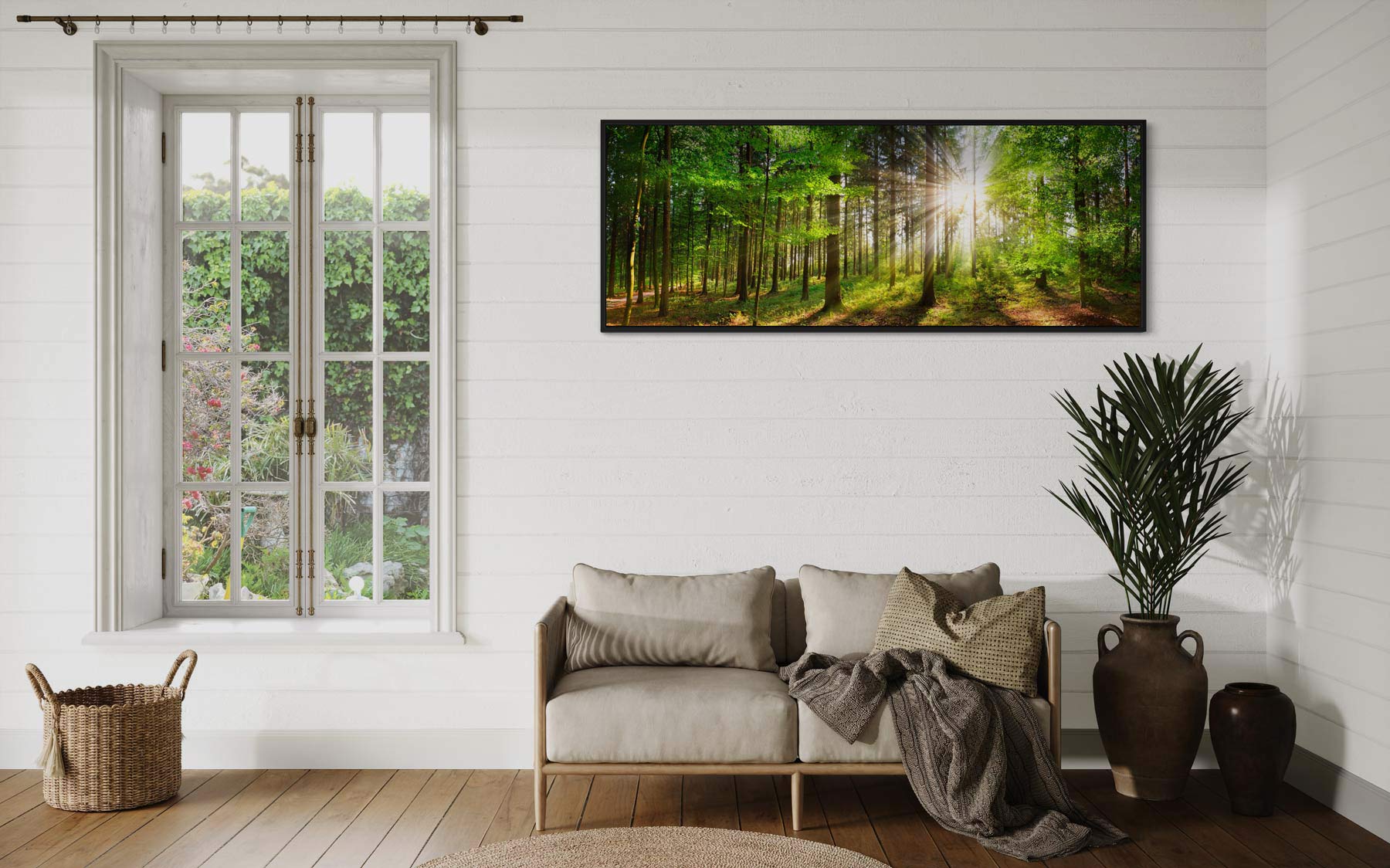Introduction to Photographic Display and the Role of Lighting
In the realm of visual arts, a photographic display is not merely about positioning printed photos. It's an intricate dance of aesthetics where lighting plays the quintessential lead. Proper illumination can enhance textures, colours, and the emotional impact of an image. Conversely, poor lighting can diminish the photo's vibrancy, distorting the photographer's intended message. Thus, lighting is not a subsidiary element but a critical component that brings a photograph to life, creating depth and ambience that resonate with the observer. When curating a photographic display, understanding the interplay between light and printed material is essential for showcasing the artwork's true essence.
Understanding the Science of Light in Photography
In the realm of photography, light is the fundamental element that shapes and defines the image. The science of light in photography involves:
-
Light Quality: The hardness or softness of light drastically affects how shadows and highlights appear on photo prints. Diffused light can emphasise texture and reduce harsh shadows, while hard light creates distinct, sharp shadows adding drama.
-
Light Direction: The angle at which light hits the subject can change the mood of the photo. Side lighting accentuates texture, back lighting creates silhouettes, and front lighting minimises shadows.
-
Colour Temperature: Measured in Kelvin, colour temperature influences the mood of the photo. Cool light (higher Kelvin) can make an image appear crisp, whereas warm light (lower Kelvin) often adds a cozy or golden glow.
Understanding these aspects is integral for photographers to manipulate light effectively and produce prints that are visually compelling and accurately represent the intended scene or subject.
Different Types of Lighting for Photo Displays
When curating the illumination for photo displays, consider these diverse lighting types:
-
Track Lighting: Offers directional light that can be adjusted to highlight specific photos.
-
Recessed Lighting: Embeds into the ceiling, providing a sleek look, and is ideal for a modern gallery feel.
-
Picture Lights: Mounted above or on the sides of photographs, these ensure focused illumination directly on the image.
-
LED Panels: Provide even backlighting for translucent or backlit photos, enhancing colours and details.
-
Spotlights: Sharp and focused, spotlights draw attention to individual pieces and can be used to create dramatic effects.
-
Ambient Lighting: General lighting that fills the room, useful for establishing the overall mood of the photo display space.
-
Accent Lighting: Used to emphasise particular prints, accent lighting adds depth and dimension to a photo display.
The Impact of Colour Temperature on Printed Photos
Colour temperature significantly influences the perception of printed photos. Warm lighting imbues images with a cozy, inviting feel but may alter the intended colour balance, potentially mutifying blues or accentuating reds and yellows. Conversely, cooler light sources can enhance blues and greens but might render warm tones less vibrant. To ensure accurate colour reproduction:
-
Consistently assess lighting conditions where printed photos are to be displayed.
-
Choose lighting that complements the dominant hues present in the photograph.
-
Adjust colour temperature to suit the emotional tone and aesthetic the artwork is meant to convey.
Understanding the interplay between colour temperature and photographic prints is essential for delivering the visual impact originally intended by the photographer.
Balancing Intensity: The Key to Illuminating Photos
Achieving the perfect balance in photo illumination hinges on understanding the interplay between light intensity and the subject matter. Overexposure can wash out details, while underexposure may leave striking elements unseen. It is crucial to:
-
Assess the natural light influencing the photograph and adjust artificial light accordingly.
-
Employ diffusers to soften harsh lights that might create unflattering reflections on the photo surface.
-
Use directional lighting to enhance texture and depth without overwhelming the photograph's intrinsic qualities.
-
Consider the photo's colour palette; warmer tones may require subtler lighting, whereas cooler tones could benefit from a slightly stronger source.
-
Iterate with different light intensities and angles, observing their effect on the photo, ensuring the lighting complements without dominating.
Directional Lighting Techniques to Enhance Visuals
Directional lighting is pivotal in exhibiting the finest details of printed photos. One method involves raking light, which casts shadows to accentuate texture and depth. Strategically positioned spotlights can emphasise specific photo elements, drawing viewer attention. Utilising backlighting, albeit more subtle, can help to create silhouettes or distinguish transparent materials within the image. The combination of varying beam angles can manipulate the light spread over a photo, offering control over the general ambiance. Mastery of these techniques ensures that each printed photograph is displayed to its utmost potential, capturing the essence and subtleties intended by the photographer.
Positioning and Angling Lights for Optimal Effect
Positioning and angling lights correctly enhances the visual impact of displayed printed photos. Key principles include:
-
Avoid Direct Glare: Aim lights so they don’t reflect directly into viewers’ eyes, causing discomfort and obscuring the photo.
-
Use the Right Angle: Position lights at an angle of 30 degrees to reduce glare and provide even illumination across the photo surface.
-
Consider Photo Position: Adjust the light angle depending on the photo's position on the wall – higher photos may require steeper lighting angles.
-
Balance Light Sources: Combine multiple light sources to eliminate shadows and distribute light evenly, especially in larger display areas.
-
Control Brightness: Ensure the light intensity complements, not overwhelms, the photograph. Photos can be washed out by overly bright light.
LED vs Halogen vs Fluorescent: Choosing the Right Bulbs
When displaying printed photos, light quality is paramount. LEDs offer longevity and energy efficiency, with a spectrum that doesn't cause fading. Halogens provide crisp white light, enhancing clarity and detail, ideal for high-precision areas. Fluorescents, though less energy-efficient than LEDs, deliver diffuse light that evenly illuminates large displays without harsh shadows. However, fluorescent light can cast a cool hue, potentially altering colour perception. Each bulb type affects the displayed photo's appearance, hence consider colour temperature, life span, and energy consumption when choosing the ideal lighting for photographic displays.
Creating a Harmonious Lighting Scheme for Galleries and Homes
When illuminating galleries and homes to showcase printed photos, one must consider both aesthetics and preservation. The lighting scheme should:
-
Balance Natural and Artificial Light: Utilise natural light to its best advantage, complementing it with artificial sources that mimic its quality.
-
Ensure Consistent Intensity and Distribution: Aim for even coverage to avoid casting shadows or creating hotspots, maintaining a soft transition between lit and unlit areas.
-
Select Appropriate Colour Temperature: Opt for LEDs with a Colour Rendering Index (CRI) over 90 to ensure colours appear true to life.
-
Implement Flexible Lighting Solutions: Use adjustable track lighting or picture lights to adapt to changing displays while preserving the simplicity of the space.
-
Protect Artwork From Damage: Employ UV filters and low-heat emission bulbs to reduce the risk of photo degradation over time.
Each element cohesively contributes to an inviting, vibrant environment that enhances the visual impact of printed photographs while safeguarding their integrity.
The Effect of Natural Light on Printed Photo Displays
Natural light can profoundly impact the perception of printed photos. When photos are displayed in areas with abundant sunlight, they may showcase vibrant colours and enhanced depth. However, several considerations must be addressed:
-
Prolonged exposure to sunlight can lead to fading, as ultraviolet (UV) rays degrade the photo’s pigments.
-
Glare from direct sunlight can obscure photo details, hindering proper viewing.
-
The angle of light incidence affects the visibility of textures and subtle tones in the photo.
To mitigate potential damage while benefiting from natural light, it's advisable to use UV-filtering glass frames and to position photos carefully to avoid direct sunlight.
Innovative Lighting Solutions for the Modern Photographer
The modern photographer must navigate a world where lighting is both an art and a science. With innovative solutions at hand, such as LED panels that provide adjustable colour temperatures and brightness, artists can simulate natural light or create dramatic effects. Diffusers and light shaping tools enable precise control, allowing for the softening or focusing of light. Connectivity to smart devices offers the ability to fine-tune lighting remotely, ensuring the perfect conditions for displaying printed photos. Smart motion sensors and programmed scenarios also cater to gallery environments, where lighting can adapt to viewer presence and behaviour, enhancing the visual experience without manual input.
Maintenance and Longevity of Lighting Systems for Art Displays
Appropriate maintenance ensures lighting systems for art displays operate effectively over time. Implementing a routine maintenance schedule is crucial. This should include:
-
Cleaning schedules: Dust and dirt can accumulate on bulbs and fixtures, diminishing light quality.
-
Bulb replacement: Even long-lasting bulbs eventually fail. Keeping spares and observing manufacturer guidelines extends system life.
-
Checking wiring: Regular checks help prevent electrical hazards and ensure consistent illumination.
-
Environmental monitoring: Adjust climate control to prevent humidity or heat from damaging lighting components.
-
Expert inspections: Annual assessments by lighting professionals can diagnose and rectify emerging issues early.
Properly maintained lighting systems not only protect the art but also provide sustainable and cost-effective exhibition lighting solutions.
Concluding Thoughts on Mastering the Art of Photo Illumination
Achieving mastery in the art of photo illumination is a nuanced endeavour — it is both a science and an art. Photographers and enthusiasts need to engage persistently with the interplay of light and shadow, and understand the influence of directional lighting, colour temperatures, and intensity on the perception of printed photos. Rigorous experimentation combined with a profound comprehension of lighting principles goes a long way. It is through this dedicated practice that one can truly elevate the presentation of printed photographs, ensuring they are viewed in a light that does justice to the captured moments they represent.





